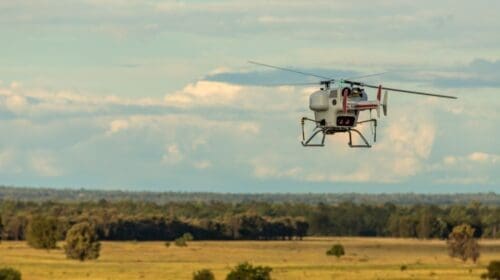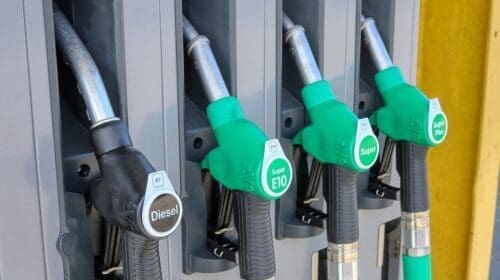Marcus Evans facilitated this year’s Transmission and Distribution Summit, which took place from April 8th to the 9th at the Encore Boston Harbor, MA. With top executives and suppliers from within the sector attending, multiple topics of conversation surfaced, but the plethora of challenges, both current and future, became a primary focus.
Mark Lauby, senior vice president and chief engineer with North American Electric Reliability Corporation, attended the summit and indicated that many prominent figures within the industry’s transmission and distribution area agree on the root of those challenges. They also feel compelled to levy some solution to avoid catastrophic consequences like grid breakdown or its inability to support the population under severe pressure. Anyone who weathered the historic events of a freezing winter in Texas when the grid failed can understand the significance of sustainability.
While the effects of the pandemic still linger, the supply chain remains unreliable. Growing political unrest has added to these woes and made equipment procurement increasingly challenging. The group assessed problematic imbalances in critical components and the raw materials needed to meet electrification goals.
“Where we are getting equipment becomes a focus,” says Lauby. “That impacts where investments in transmission and distribution projects are made.”
Breakers, substation equipment, and transformers are critical components necessary to enable transmission and distribution. Lauby says the availability of these items is all impacted by a suffering supply chain.
“The load is growing, and we cannot procure the equipment needed to support it,” says Lauby. “This issue will impact our ability to electrify.”
Lauby credits climate change as an additional significant challenge. To decarbonize by 2050, Lauby foresees the target date may need to be attainable. He finds that the primary sources of alternative energy, like wind and solar, have undeniably contributed to providing energy for grid use, but they still need to be made reliable.
“What do we do if the wind does not blow for a week?” asked Lauby. With climate change having that impact, smoke blocks sunlight from reaching solar panels.”
According to Lauby, the increasing hyperactive weather patterns worldwide illuminate the electrical grid’s vulnerability. Devastating storms, harsh winters, wildfires, and other catastrophic events threaten the physical security of infrastructure.
“We are trying to design a more robust system,” says Lauby. While cold weather bouts draw on supply, so do other activities like maintenance work in the Spring months.”
Lauby adds that although hydrogen is a viable energy source, its contribution is limited, as with wind and solar energy. The infrastructure needed to support it as a growing energy source is not to scale.
“We need some type of concentrated energy,” says Lauby.
The identification of transmission and distribution challenges illustrated a concerning future, so the attendees at the summit collaborated to offer potential solutions. Although it might seem in its infancy, Lauby sees a place in the future of hydrogen energy supply. Adequate investment must be made to make it a viable solution to fruition.
Grid enhancement is critical in establishing sustainability in the transmission and distribution sector. Microgrids serve as small-scale electricity networks that possess the ability to connect consumers to a needed electrical supply. Their ability to stand on their own or be connected to a larger grid while still harnessing the ability to produce electricity during an outage makes them increasingly valuable for a sustainable future. While large-scale energy grid development surpasses budgets in some areas, such as rural communities, microgrids offer economic savings while providing reliable energy solutions that partner with renewable energy sources.
Lauby points to smart grid development as a potential solution for the future. Smart grids encompass the total of current and prospective responses to the challenges associated with meeting electricity supply demands. The flexibility found in these systems offers a greater reach for highly variable renewable energy sources. They additionally provide the ability to monitor and control noncritical residential devices during peak power periods and then return functionality during nonpeak usage hours.
Looking further at future power generation, Lauby says synchronous condensers were discussed at the summit. A synchronous condenser is not used to convert electric power to mechanical power but to alter the conditions on the transmission grid. Voltage regulators control the generation or absorption of reactive power to alter the grid’s voltage and improve the power factor. Their reactive power can be adjusted as needed, and they tolerate power fluctuation voltage decreases more effectively than other solutions. Synchronous condensers additionally stabilize and facilitate switchover between power grids.
While each of these potential strategies promises the ability to meet decarbonization goals and solve electrification challenges, forces exist to derail any progress made. Cybersecurity threats remain and must be thwarted. With AI bringing solutions to multiple industries and platforms, the transmission and distribution sector can increase grid visibility from various vantage points and screen potential attacks. Real-life case studies were presented at the summit and analyzed to measure AI’s capability to decrease cyber security attacks.
According to Lauby, transmission and distribution’s future depends on regulation, not for fiscal purposes but for standardization. The development of standards utilized by all is expected to enhance the power grid overall.
“North American Electric Reliability Corporation is developing standards of winterization, which FERC is reviewing,” says Lauby. Writing standards helps us keep conservation alive.”
Lauby says an investment must be made in the transmission and distribution workforce to meet the challenges and bring solutions to fruition. With most industries suffering from minimal selection in available personnel, Lauby looks to the young people instead of the current pool when seeing the industry’s future. He believes transmission and distribution must be tapped at an early age, like those in the ninth grade. That grade level represents the pivotal point where academic careers can be cultivated to produce individuals who will eventually make their way into the workforce.
“There is a huge need for technical expertise to modernize the electric industry,” says Lauby.
Young people have always been said to embrace technology and the latest process enhancements more easily. The same can be said for transmission and distribution careers, but the need spans a vast demand. With the infrastructure expansion needed, a high demand exists for technicians who string wire to connect grid components. The need for professional engineers is greatly expanding, with the calling to develop these new systems needed to electrify the population further.
“What a great time to be an electrical engineer,” says Lauby. It is a highly paid career in demand and a straight shot to the middle class.”
Nick Vaccaro is a freelance writer and photographer. In addition to providing technical writing services, he is an HSE consultant in the oil and gas industry with twelve years of experience. Vaccaro also contributes to SHALE Oil and Gas Business Magazine, American Oil and Gas Investor, Oil and Gas Investor, Energies Magazine and Louisiana Sportsman Magazine. He has a BA in photojournalism from Loyola University and resides in the New Orleans area. Vaccaro can be reached at 985-966-0957 or nav@vaccarogroupllc.com.
Oil and gas operations are commonly found in remote locations far from company headquarters. Now, it's possible to monitor pump operations, collate and analyze seismic data, and track employees around the world from almost anywhere. Whether employees are in the office or in the field, the internet and related applications enable a greater multidirectional flow of information – and control – than ever before.









